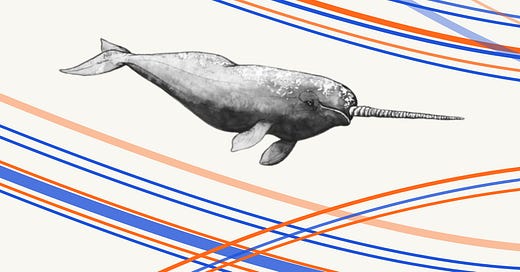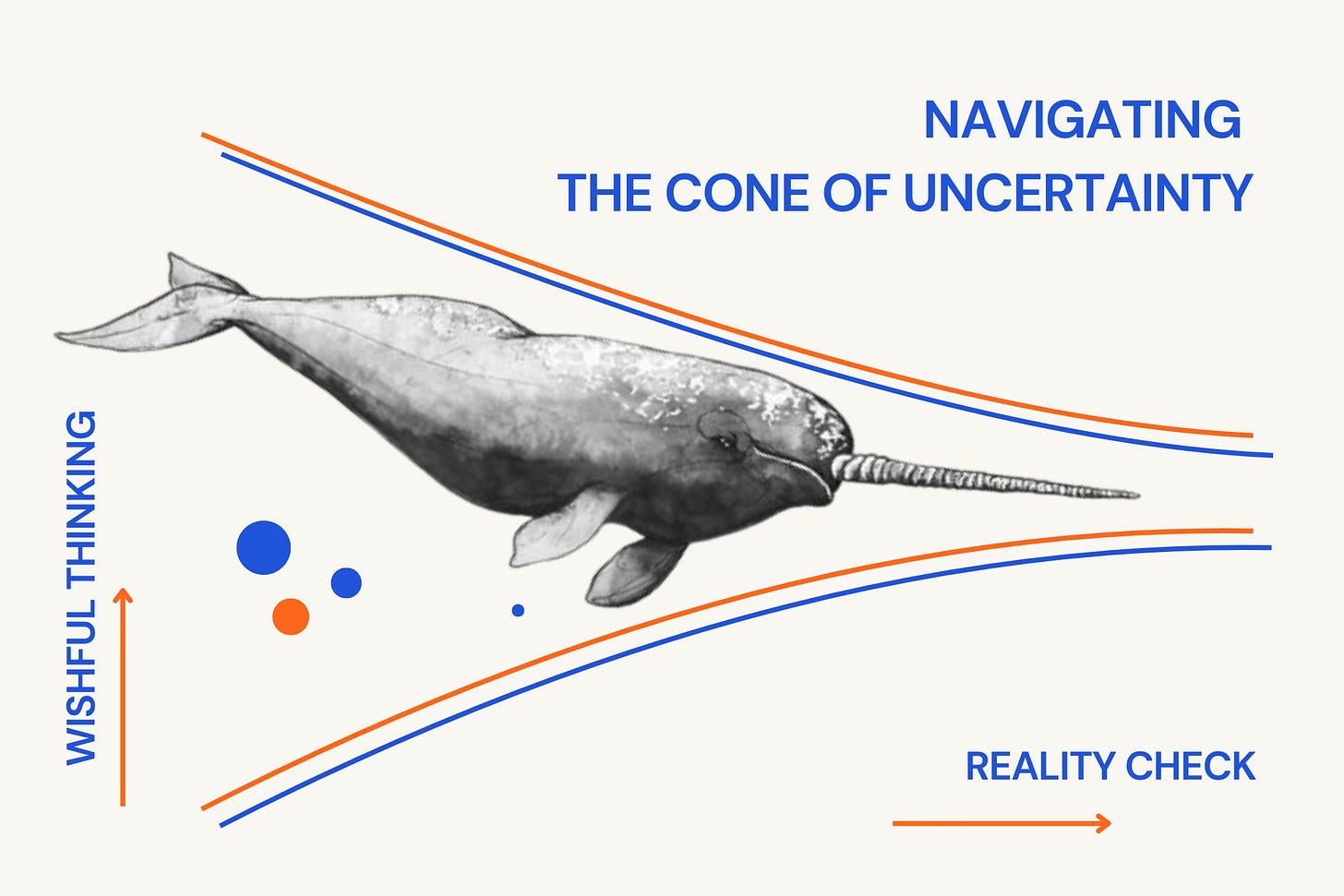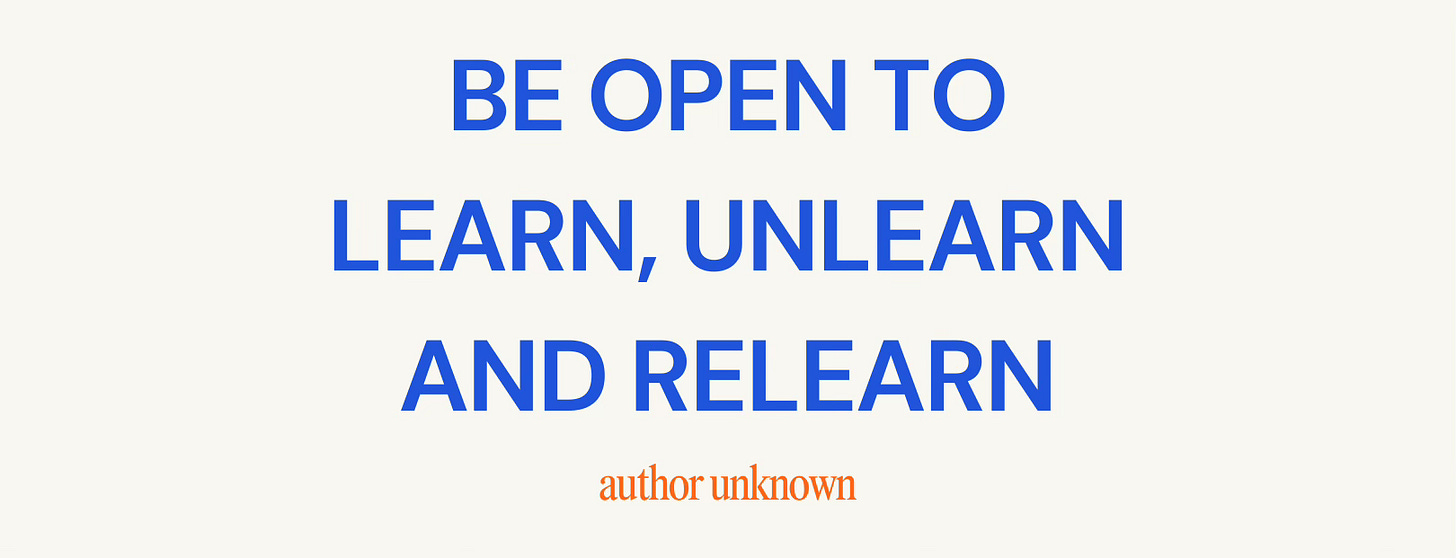How Working in an AI Startup as a Single PM Is Shaping My Mindset and Skills
The untold truth about being a lone Product Manager in a startup: chaos, growth, and a dash of plumbing
👋 Hi, I’m Dominika—an AI Product Manager exploring how to make tech more human. Join me every Tuesday for candid stories, sharp insights, and a bit of fun along the way. Subscribe to Brave Little Insights and let’s make sense of it all!
Working in a startup as the only product manager is like being dropped into the deep end of a pool, except you’re also expected to teach everyone else how to swim. And maybe fix the pool pump while you’re at it. It’s hard, but honestly? It’s worth it.
Wearing All the Hats (and Sometimes Cleaning Them
Startups are demanding. Being the sole PM in a startup is next level. One minute I’m figuring out hiring strategies, the next I’m shaping the product vision, organizing backlogs, or navigating team priorities. Then there are the "bonus tasks": arranging the office, paying the bills, watering the plants, or descaling the toilet because someone has to do it. It’s exhausting, chaotic, and ridiculously hands-on.
Even though I’ve got some experience, there’s no manual for building an organization from scratch. I’m learning everything—the big, the small, and the unexpectedly important. It’s not just about launching a product; it’s about laying the foundation for how we build it, why we build it, and how we work together to make it happen. Every little detail matters because those details become culture.
The Weight of Uncertainty
I won’t lie—there are moments when I feel completely lost. There’s the pressure to make progress, to keep the team motivated, to bridge gaps between the CEO’s expectations and the reality of what’s possible. There’s a lot of asking questions and not always finding answers. It’s tough.
Sometimes it feels like I have to know a little bit about *everything*. I’m connecting dots, collecting data, trying to make sense of the chaos, and creating order where there wasn’t any. I’m learning how to share responsibility while still owning my part, to make decisions, and move forward even when I’m not entirely sure it’s the right way. It’s messy and humbling, and it teaches you to trust your instincts—or to keep trying until you figure it out.
Building, Rebuilding, and Building Again
Let me tell you about our project management system. I’ve rebuilt it four times already. The first version was embarrassingly basic—a task list with some documentation. It worked, but as our team and projects grew, so did our needs. So I rebuilt it. Then we added another product and realized the system needed even more structure. Enter Version 3.0. Today, I’m refining Version 4.0, and we all know it’s not the last iteration.
I don’t love rebuilding project management systems. It’s tedious and not exactly glamorous. But every time I do it, I learn something. I’ve had to understand our team’s pain points, rethink workflows, and accept that no off-the-shelf solution will magically solve our problems. It’s a process of trial, error, and improvement—just like building a product. And even though it’s frustrating, I can see the results. We work better, smarter, and more efficiently. That’s a win.
Learning to Be Crappy
One of the biggest lessons I’ve learned is to embrace imperfection. To innovate, you have to start somewhere, even if that “somewhere” is rough. Whether it’s a scrappy proof of concept that needs multiple refinements or a process that ends up in the trash, it’s all part of moving forward. You fail, you learn, and you try again. And again. And again.
I’ve learned resilience, flexibility, and the importance of staying open to change. I’ve learned to let go of perfectionism and to see mistakes as opportunities. Building internal systems, just like building products, requires you to get your hands dirty. It’s not always fun, but it’s incredibly rewarding when it finally clicks.
In AI, where the landscape shifts daily, that mindset is essential. Every time I test a new AI tool or rethink a process, I’m reminded of the parallels between building products and staying adaptable. Innovation isn’t about getting it perfect on the first try; it’s about getting it better, faster, and more aligned with real needs.
"The Art of Innovation" by Guy Kawasaki
Learn how to turn crappy first drafts into world-changing ideas, because innovation isn’t about perfection—it’s about starting messy and finishing strong (with a bit of flair)
Ready for Whatever Comes Next
Today, I’m tired. But I’m also proud. I’ve learned more in this role than I ever thought possible—about products, people, and myself. I’m building things I never imagined I’d be responsible for, and while it’s far from easy, it’s shaping me into a better PM and a better professional.
So here I am, caffeinated and bracing for the next sprint. It’s hard, messy, and often frustrating, but at the end of the day, I wouldn’t trade it for anything.
Brain Snacks for the Curious Mind
What’s the best thing chaos ever taught you?
When did messing up actually make things better?
If you could rebuild anything, no questions asked, what would it be?
What’s your take on building better systems or navigating startup chaos? I’d love to hear your thoughts—drop a comment or hit the button below to message me directly!







Love this honest take on the PM rollercoaster! After leading e-commerce transformations in publishing and retail, I can totally relate to that "fixing the pool pump while teaching swimming" analogy.
The part about rebuilding systems resonates deeply with my experience - I've reconstructed entire digital platforms multiple times, each iteration teaching something new. It's like when I automated 90% of operations in my latest venture - the first version was embarrassingly basic, but that's exactly how it needed to be.
The reality is that digital leadership isn't about having perfect systems - it's about building, breaking, and rebuilding until things click. My recent experiments with AI tools taught me that sometimes the "crappy first draft" leads to the most innovative solutions D:
Quick question: Has anyone else found that their biggest innovations came from initially "broken" systems? I've noticed this pattern consistently across various digital projects, where the messiest starts often led to the most elegant solutions.
(This kind of raw, honest discussion about digital transformation is exactly what we need more of in our industry. Thanks for sharing!)
What’s the best thing chaos ever taught you? You learn a lot; it's painful, but you learn a lot. The problem is that it's super unsustainable, and balancing the pros and cons of that situation is not easy (after a few years, I still don't know how).
By the way, that's a great start. I'm looking forward to more insights!